Musical Intervals: Train Your Ear with These Easy Songs
We'll help you train your ear with songs like "The Jaws Theme," "Greensleeves," and more.

An interval in music defines the difference between two pitches. Intervals are classified by their quality, as Major, Minor, Augmented, Diminished, and Perfect, and their number, such as unison, second, third, fourth, fifth, sixth, seventh, or octave.
- Major and Minor intervals are the intervals created by the key signatures in Major or Minor Keys without any added augmentation or diminished tones.
- Perfect Intervals refer to Unison, 4ths, 5ths, and Octaves. These intervals are given the name “Perfect” because they stay the same, whether the key signature is Major or Minor.
- Augmented Intervals are wider by one semitone (half-step) than perfect or major intervals.
- Diminished Intervals are smaller by one semitone (half-step) than perfect or minor intervals.
Augmented 4ths and Diminished 5ths are the most common uses of Augmented and Diminished Intervals.

Though intervals are easily distinguishable on the staff, when it comes to memorizing and identifying them, it can take some serious ear training!
So, interval training is important and carries many benefits. Luckily, we’ve put together some songs that everyone knows to help you identify your intervals in seconds.
Minor Second: The Jaws Theme Song
The minor second is the smallest possible interval, with only one half-step separating each note.

The best piece to represent this interval is the Jaws Theme Song. The opening notes alternate between an E and F, going up and down a minor second.
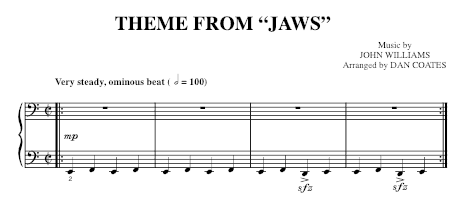
Major Second – Happy Birthday
A major second consists of one whole step (or two half-steps).

Everyone knows “Happy Birthday,” and in fact, a major second is at the very beginning of the song.
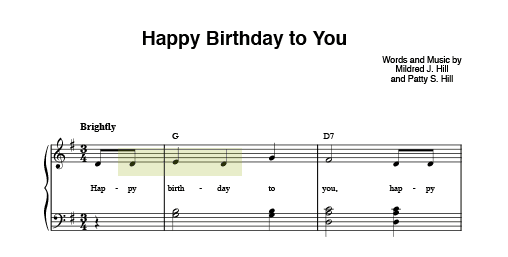
From the highlighted “D” at the beginning to the “E,” is a major second up, and from the “E” back down to “D” again is a major second down. Simply sing the words “Happy Birthday” when you’re trying to identify a major second, and you’ll know right away.
Minor Third: Greensleeves
A minor third consists of one whole-step and one half-step (or three half-steps).

You may not think you know the tune of “Greensleeves,” but you probably do! The popular Christmas tune “What Child is This” also shares the melody. The first two notes of the piece are a minor third. In the sheet music below the interval is from the first E to the first G (“A-las”).
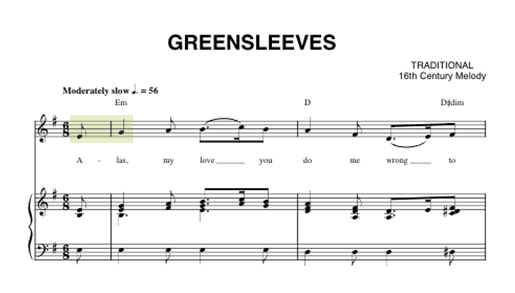
Another fun tune that you can use to identify a minor third is “Hey Jude” by The Beatles. Just like “Greensleeves,” it occurs in the first two notes of the song. However, this minor third is descending, rather than ascending.
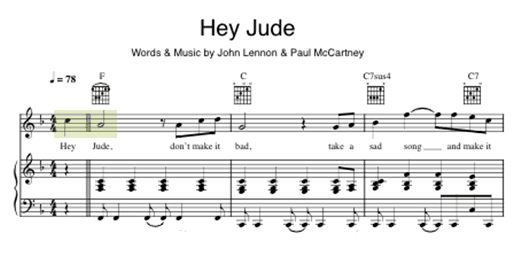
Major Third: When the Saints Go Marching In
Moving into happier territory, a major third consists of two whole steps.

We like to use the first two notes of the classic tune, “When the Saints Go Marching In” to identify a major third.
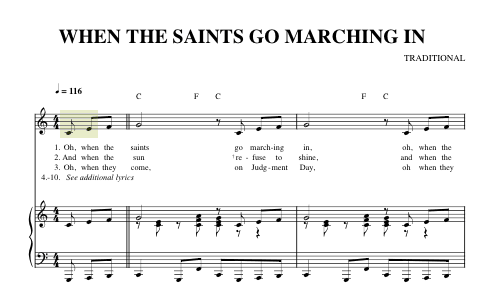
For a descending major third, you can use the first two notes of the well-known spiritual, “Swing Low, Sweet Chariot.”
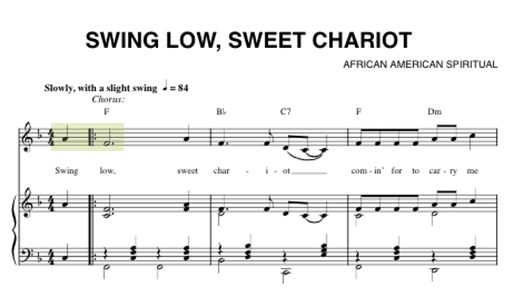
Perfect 4th: Amazing Grace
In music there are four different “perfect” intervals:
- Perfect 4ths
- Perfect 5ths
- Perfect Unison
- Perfect Octaves
These intervals are called “perfect” for a number of reasons, some of which require a more in-depth historical analysis, but the best way to remember them is to keep in mind that their quality stays the same whether they are in major or minor keys. There is no “major fourth,” or “minor fourth,” because, in both types of keys, the interval distance stays the same. In a perfect fourth, that distance is two whole-steps and one half-step.

The first two notes of the traditional hymn “Amazing Grace” depict a perfect fourth. In the sheet music below, the interval is found in the upper voice, from the first C to the first F.
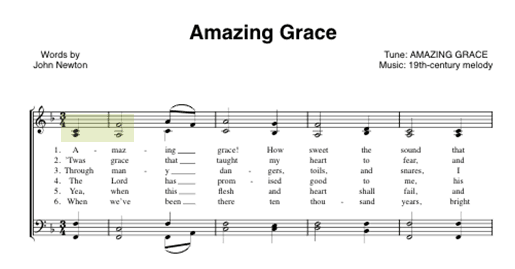
For a descending perfect fourth, look no further than the beginning of the classic Christmas tune “O Come All Ye Faithful.”
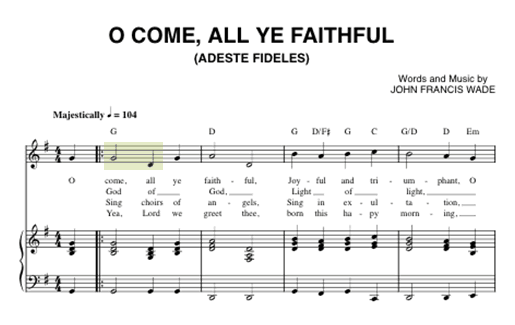
Tritone: The Simpsons Theme
If you’ll recall, at the beginning of this article we briefly discussed augmented and diminished intervals. A tritone is a name given to an augmented 4th or a diminished 5th. It’s important to realize that augmented 4ths and diminished 5ths actually both consist of three whole-steps.
If you’ll look at the image below, notice how the intervals visually look different. Then, listen to the audio to the clip, and you’ll hear that an F-Sharp and a G-Flat are the same note.

Because tritones can sound very dissonant, they’re a little harder to identify. But it just so happens that there is a tritone right at the beginning of the incredibly famous theme from The Simpsons.
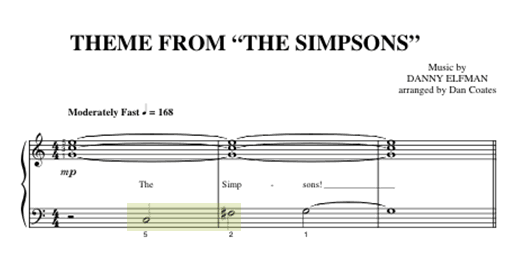
Perfect Fifth: Twinkle, Twinkle, Little Star
We’ve struck another perfect interval! The perfect fifth is probably going to be one of the easiest intervals for you to memorize because it’s one of the strongest sounding intervals. To reiterate, perfect fifths show up in both major and minor chords, so they’ll sound the same regardless of the key being major or minor. A perfect fifth consists of three whole-steps and one half-step.

A great song for identifying perfect fifths is the children’s classic, “Twinkle, Twinkle, Little Star.” The perfect fifth is found in the jump from the first F to the first C.
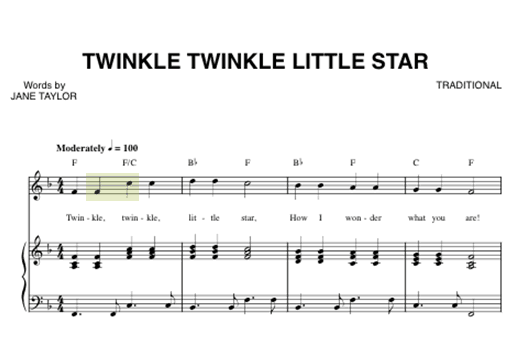
Throwing another cartoon favorite into the mix, a descending perfect fifth can also be found in the theme song from The Flintstones.
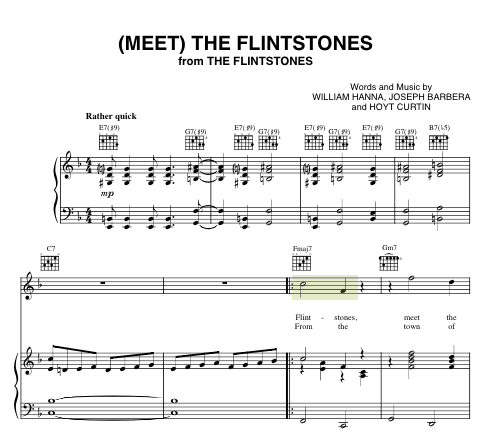
Minor Sixth: The Entertainer
A minor sixth is one of the trickier intervals to identify, simply because it isn’t as common. Made up of four whole-steps, the interval is one half-step wider than a perfect fifth.

Scott Joplin’s “The Entertainer” is one of the most-played piano pieces of all time, and the beginning of the main theme goes up and down a minor sixth several times.
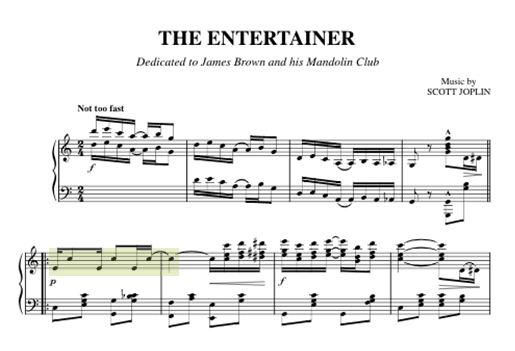
A minor sixth can also be found in the chorus of “We Are Young” by Fun.
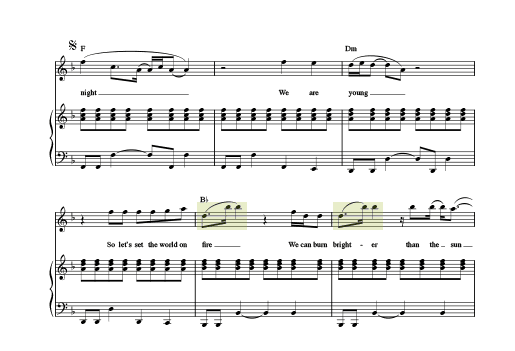
Major 6th: My Bonnie Lies Over the Ocean
A Major 6th is an interval of four whole-steps and one half-step. It’s often attributed with the first two notes of the NBC chimes jingle.

Another popular tune containing a major sixth is the traditional Scottish song, “My Bonnie Lies Over the Ocean.” Like many of our other examples, the interval is reflected in the first two notes of the melody.
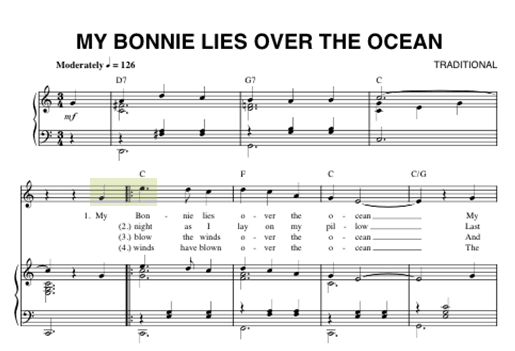
A descending major sixth can be found in the spiritual “Nobody Knows the Trouble I’ve Seen .”
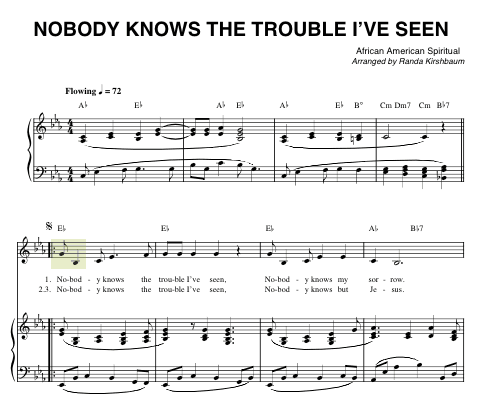
Minor 7th: Somewhere from West Side Story
Minor 7ths and major 7ths can be easy to mix up because they’re getting very close to the tonic one octave up. A minor 7th consists of five whole steps.

A minor 7th can be found in “Somewhere” from West Side Story at the beginning of the song.
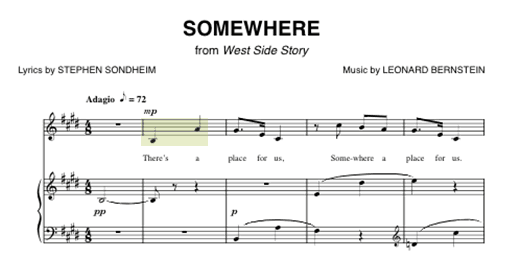
Major 7th: Take On Me
Finally, for the largest interval! The Major 7th is one half-step smaller than an octave and is comprised of five whole steps and one half-step.
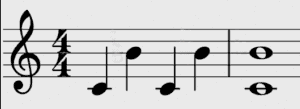
Though A-Ha’s “Take On Me” may be known for some stratospheric vocals, the beginning of the chorus actually kicks off with a major 7th.
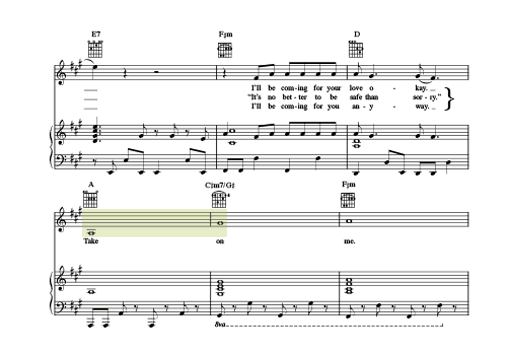
We hope we’ve made your life a little easier with these amazing interval pieces. Before we leave you, here’s a printable chart you can use for a cohesive summary! Click here to save the PDF.
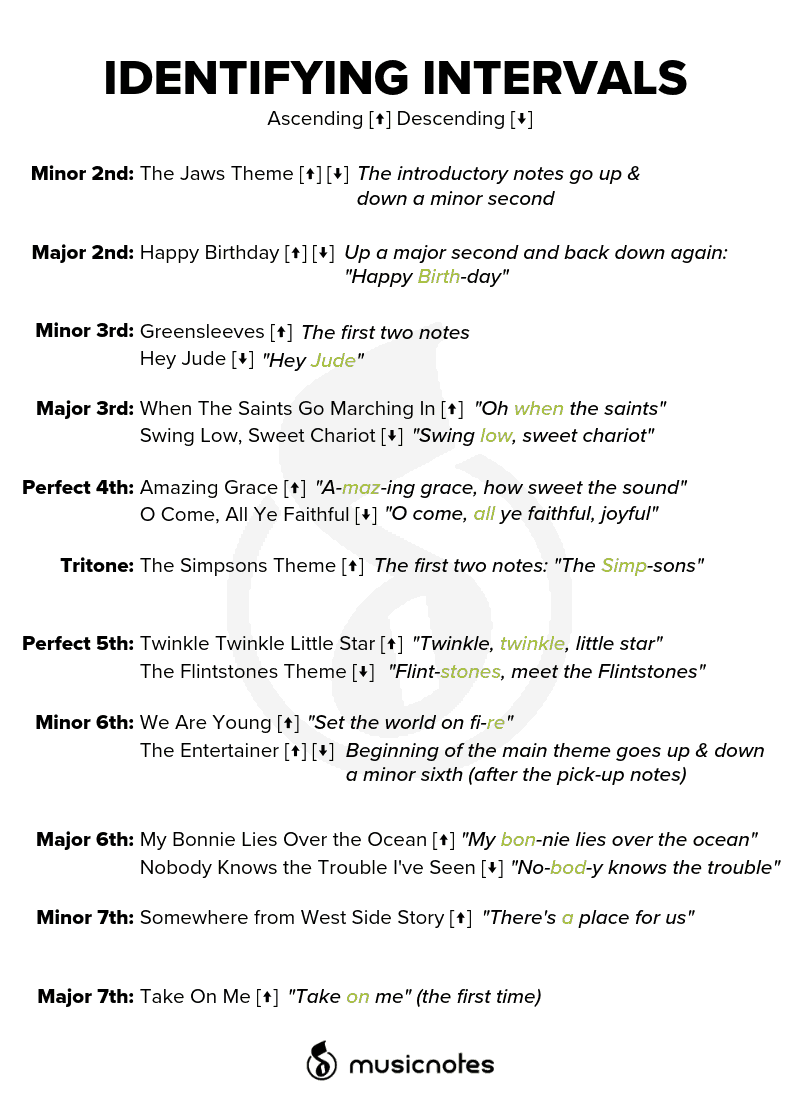
FAQ:
Why is ear training important?
1. Recognize pitch distances
Intervals are critical components of relative pitch, which is an important listening skill involving your sense of how low or high a note sounds in comparison to other notes. We rely on our sense of pitch to appreciate, understand, and create music. By engaging in training your ears, you will improve your sense of relative pitch. This will enable you to more easily identify intervals in a piece of music. As you become more practiced at this, the act of identifying pitch will become almost instinctive.
2. Hear music more clearly
As you become more skilled in hearing and identifying intervals between notes, you will begin to hear the individual sounds that make up a piece of music. You will identify harmonies, melodies, and rich detail that makes up a good song. This leads to a clearer understanding and appreciation of music as a whole.
3. Play by ear
When you see a musician who is able to play a song by ear on the guitar or piano, that is finely tuned relative pitch at work. The musician can “hear” the melody in his head (known as audiation), but connecting that melody to the notes on the instrument requires an advanced understanding based on knowledge of musical intervals.
4. Create Music
Ear training also helps with music composition. With a strong sense of relative pitch developed through ear training, you will have the ability to write the notes that correspond to the song you hear in your head without hunting and pecking for the right sounds on a keyboard.
5. Improve musicianship
Relative pitch improvement helps with overall musicianship, enabling you to easily work out the chords in a piece of music once you know the key it is written in or the note that it starts on. If you enjoy improvisation on your instrument, having an understanding of relative pitch will make your jam sessions flow much better.
6. Connect with theory
Most musicians learn about intervals in music theory classes and textbooks. Spelling out the intervals is rather tedious, and many musicians learn what they need to about intervals but don’t pursue them in “real music.” By engaging in ear training and improving your sense of relative pitch, you will bring music theory to life and see how it relates to actual music.
7. Improve your sight-singing
Ear training goes hand-in-hand with singing, and mastering intervals carries some serious benefits for vocalists. Sight-singing is very difficult, particularly when there is a large leap in the melody or your starting pitch is from a different voice part and you have to search for the right note. Once your ear is trained to understand intervals, you will be able to pick out a melody from the musical staff, using your skills with interval recognition to pinpoint the notes with your voice.
What are Melodic vs. Harmonic Intervals?
When measuring intervals horizontally, they are known as melodic or linear intervals due to the notes occurring in succession, one at a time. When measuring intervals vertically, they are known as harmonic intervals because the notes are blended together and played simultaneously. Intervals are a critical component in musical composition, and may be viewed as the building blocks of chords, melodies, and scales.

